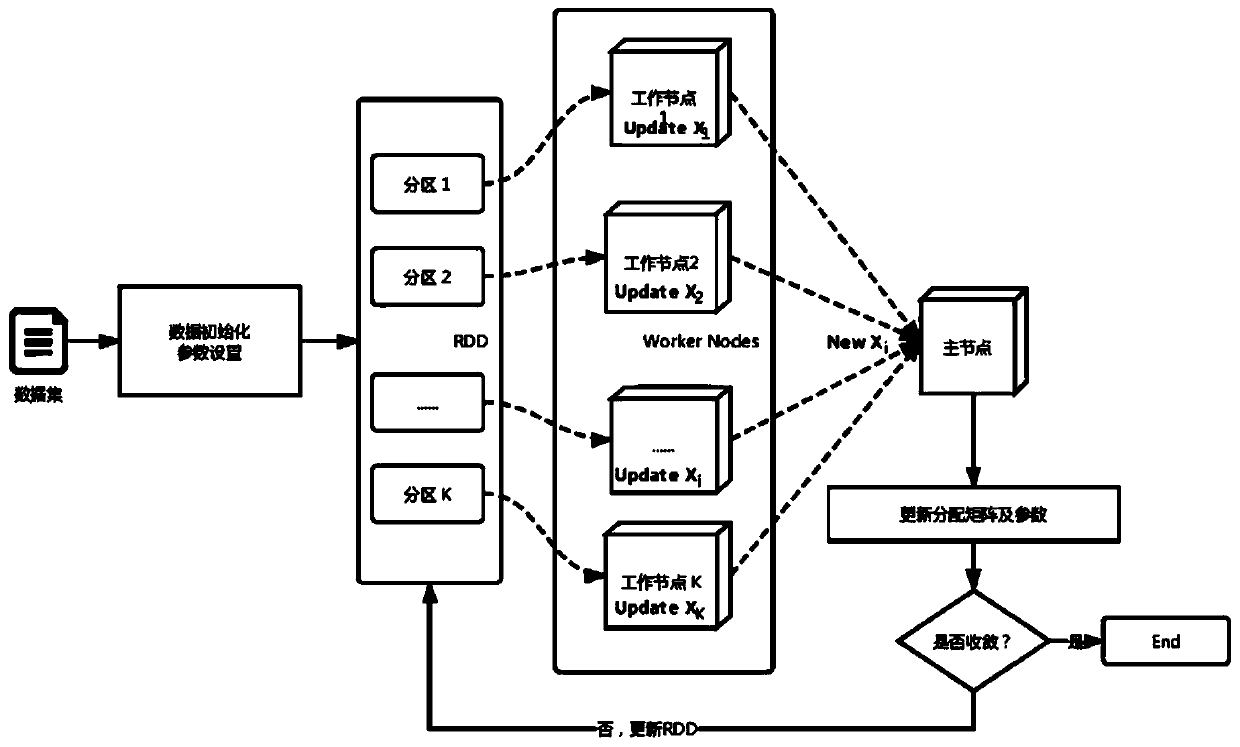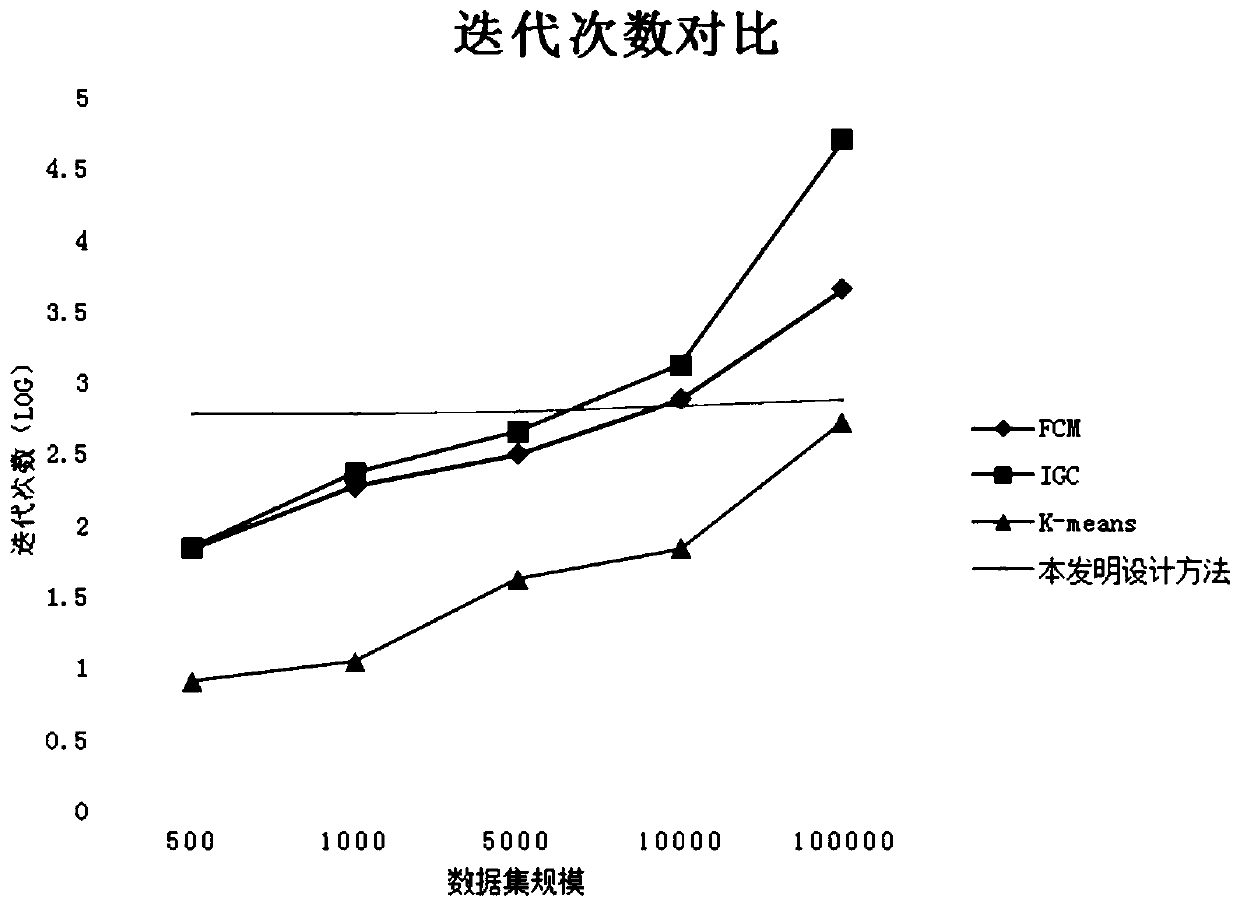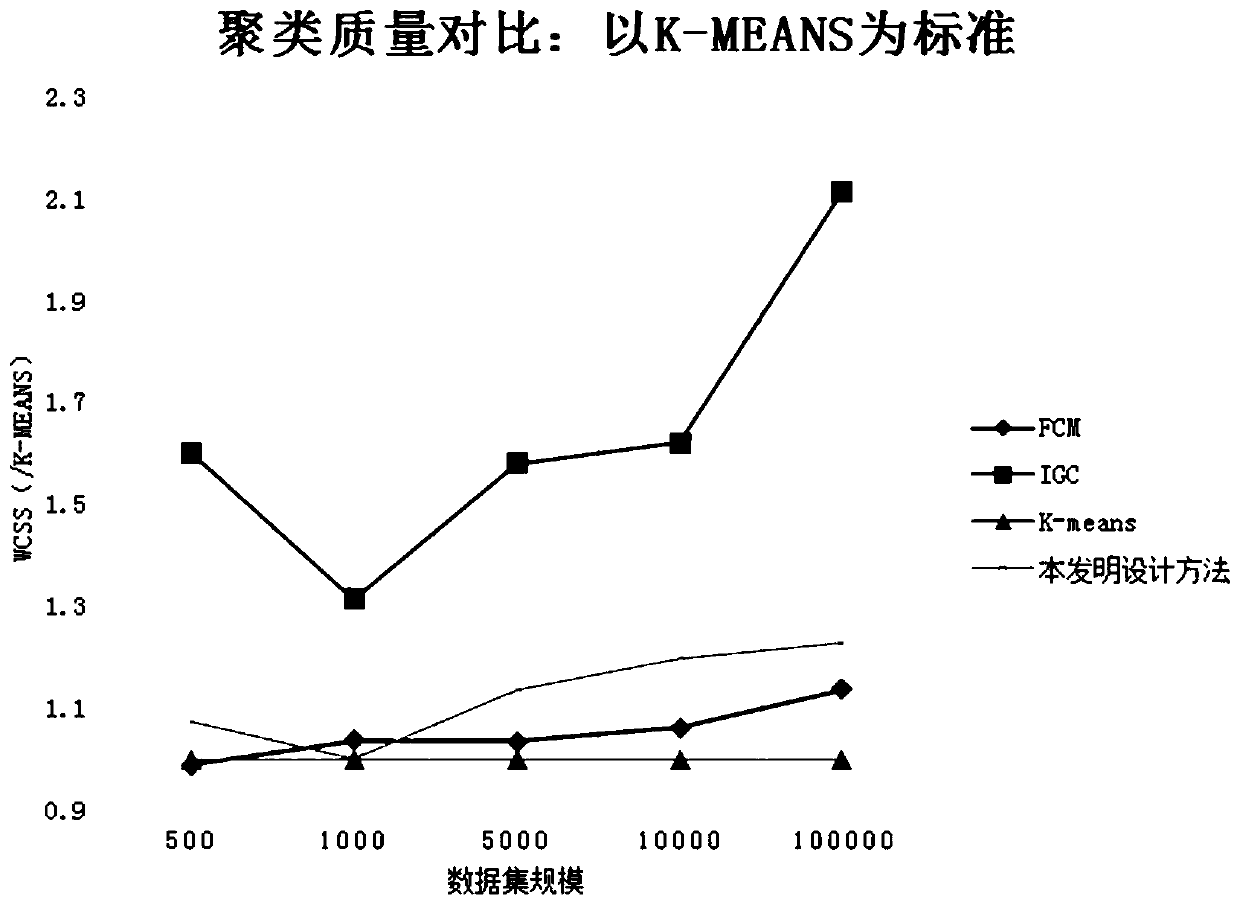Optimization theory-based parallel clustering method with scale constraint
A technology for optimization theory and clustering methods, applied in character and pattern recognition, instruments, computer components, etc., can solve problems such as poor clustering quality, inability to execute data sets, and dependence on prior knowledge to achieve high applicability , easy-to-deploy effects
- Summary
- Abstract
- Description
- Claims
- Application Information
AI Technical Summary
Benefits of technology
Problems solved by technology
Method used
Image
Examples
Embodiment 1
[0113] based on figure 1 The Spark distributed computing process, the clustering results of the present invention are compared with the clustering results of the interleaving group convolution algorithm IGC, the fuzzy clustering algorithm FCM and the K-Means clustering algorithm.
[0114] Such as figure 2 As shown, in terms of the number of iterations, the convergence speed of the method proposed by the present invention is relatively stable. Under the test cases of large-scale data sets, the solution can still be completed within a limited number of times and high-quality clustering results can be obtained. Among them, the IGC algorithm is more sensitive to the size of the data set, and it is difficult for IGC to converge under large-scale testing.
[0115] In the comparison of clustering quality, the clustering result of the K-Means algorithm is used as the standard (since K-Means has no size constraints, so its intra-class sum of squares (WCSS) is the smallest), the large...
PUM
 Login to View More
Login to View More Abstract
Description
Claims
Application Information
 Login to View More
Login to View More - R&D
- Intellectual Property
- Life Sciences
- Materials
- Tech Scout
- Unparalleled Data Quality
- Higher Quality Content
- 60% Fewer Hallucinations
Browse by: Latest US Patents, China's latest patents, Technical Efficacy Thesaurus, Application Domain, Technology Topic, Popular Technical Reports.
© 2025 PatSnap. All rights reserved.Legal|Privacy policy|Modern Slavery Act Transparency Statement|Sitemap|About US| Contact US: help@patsnap.com



